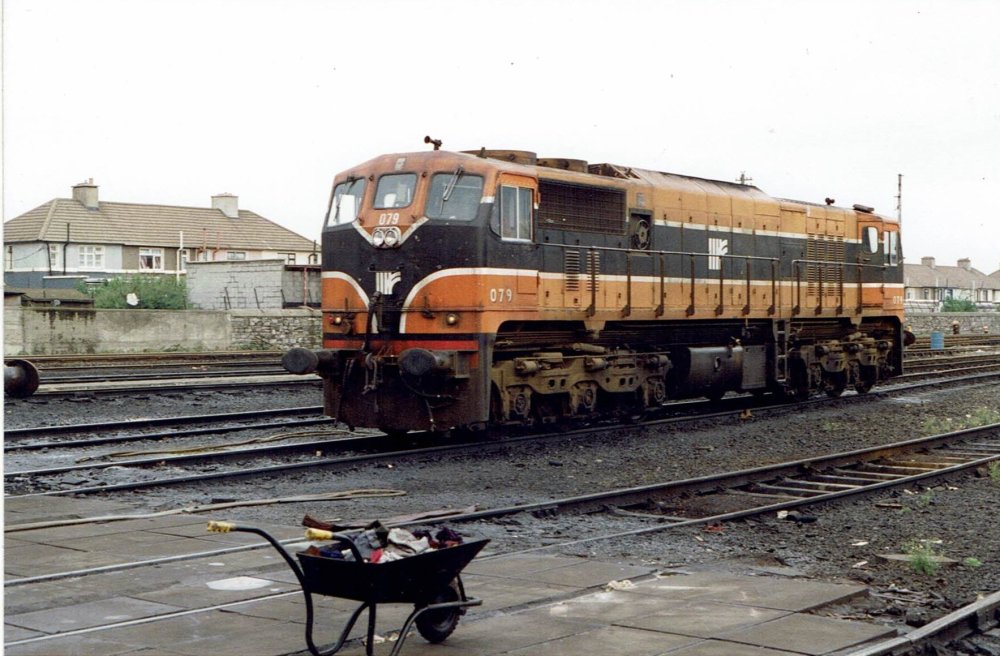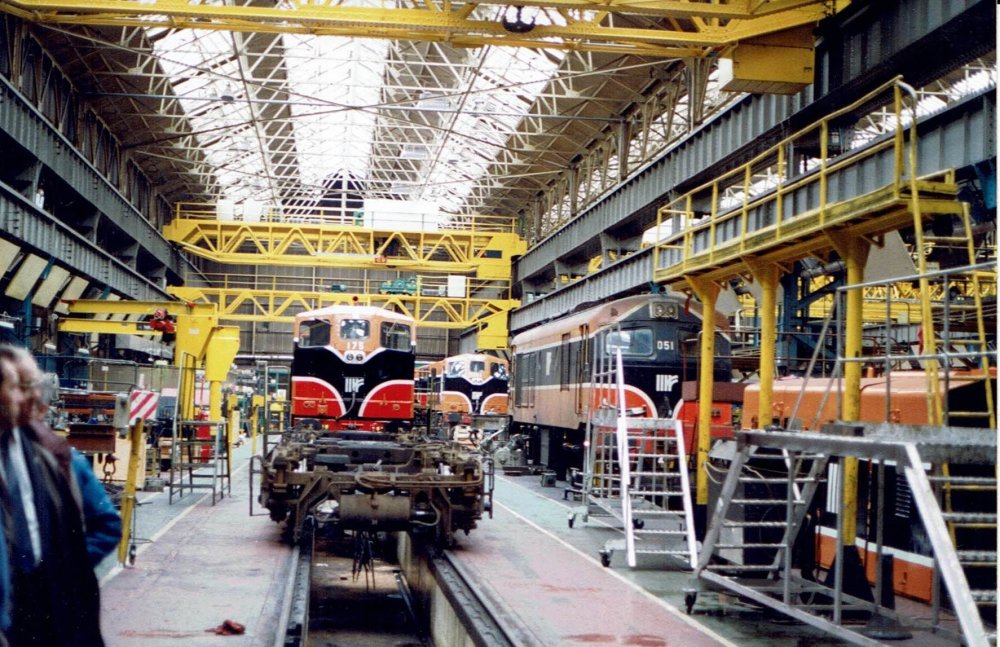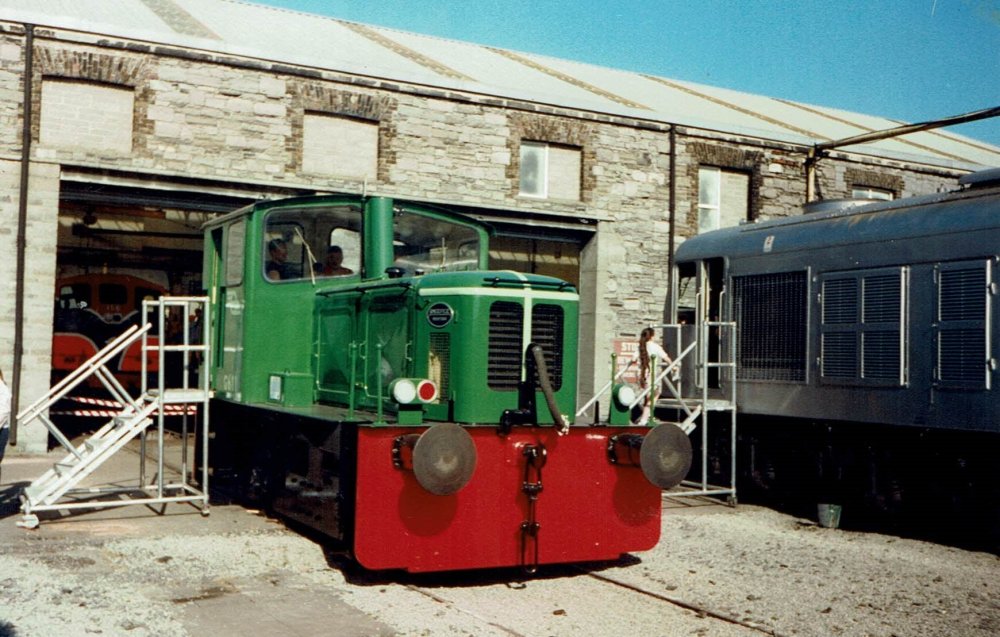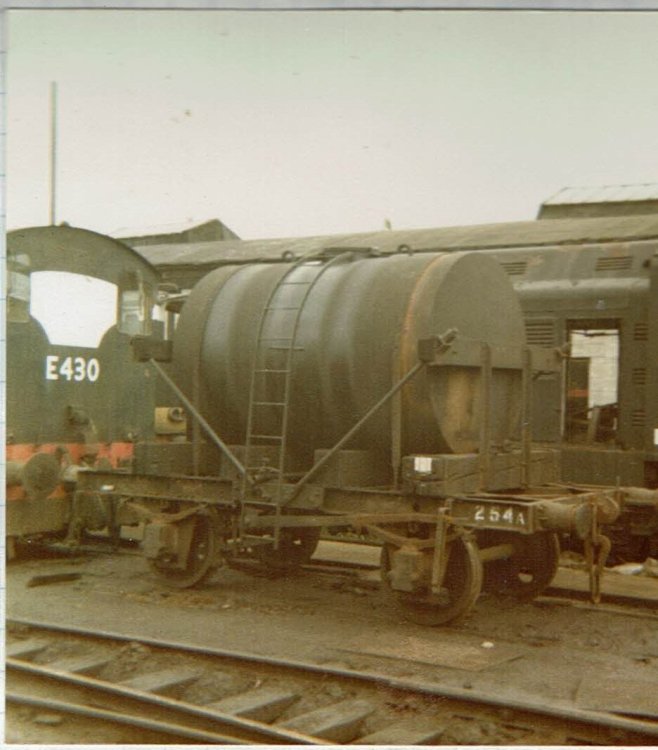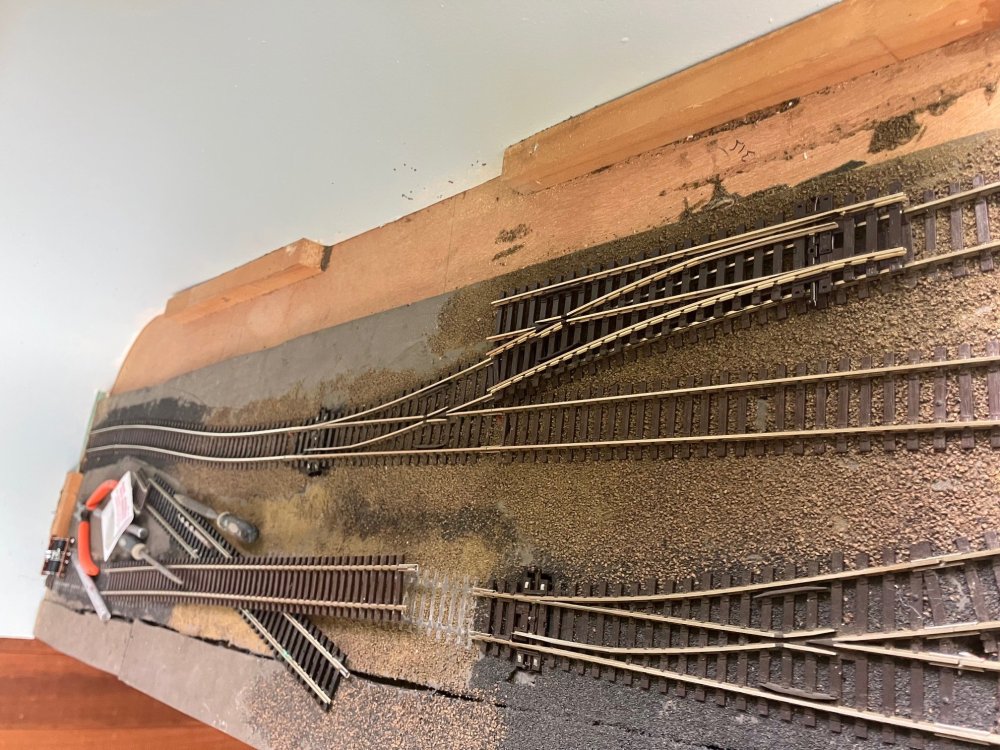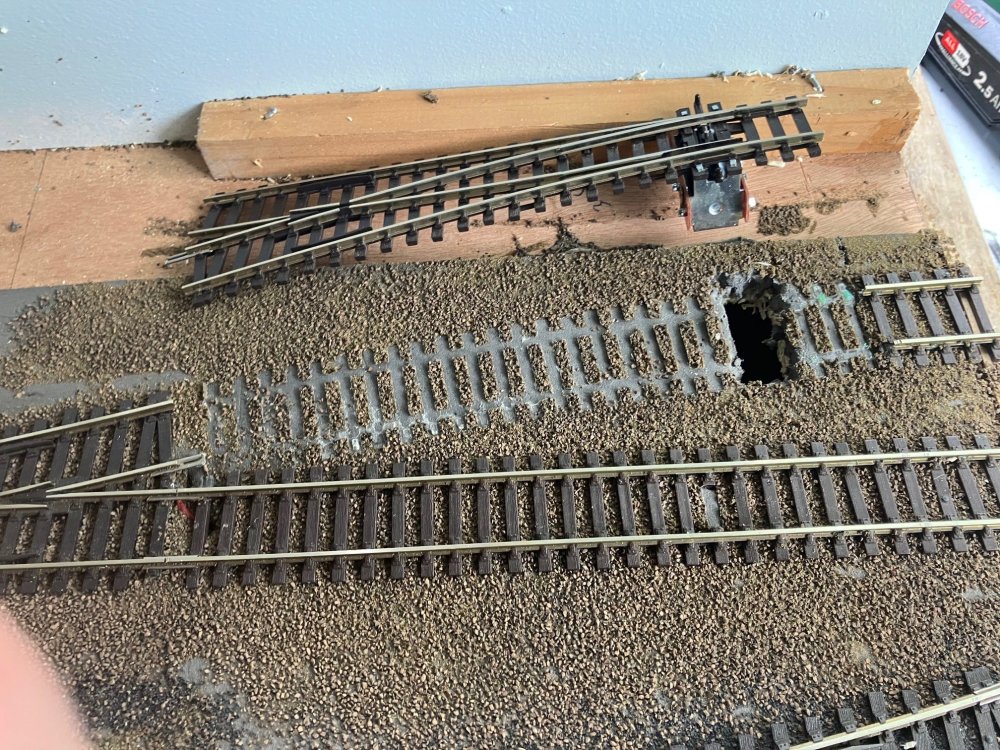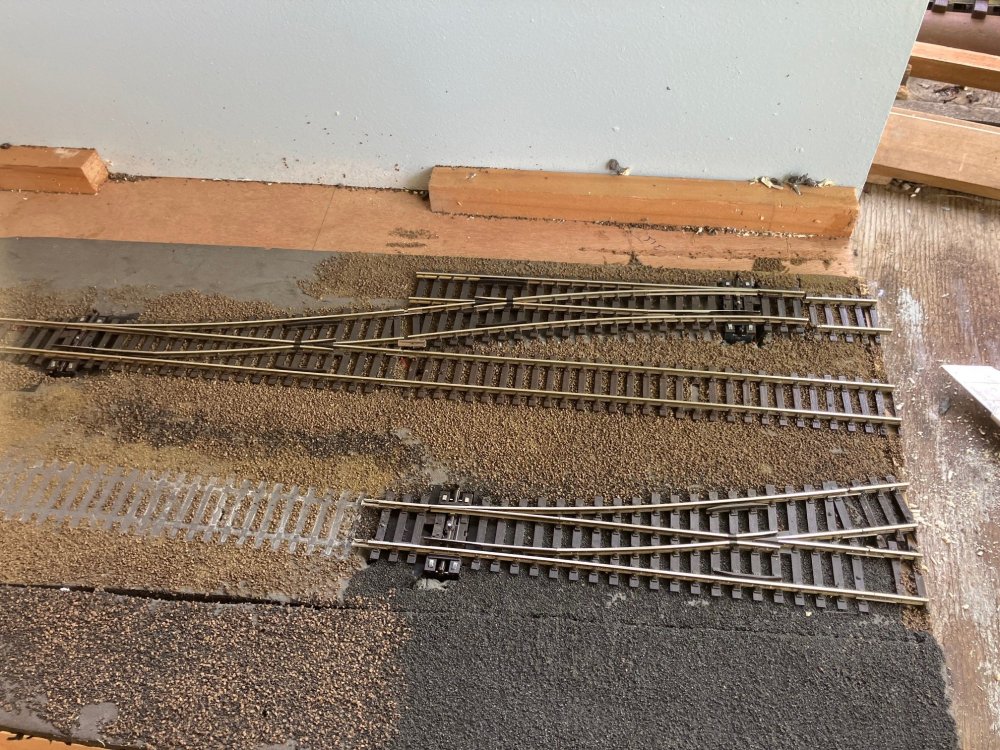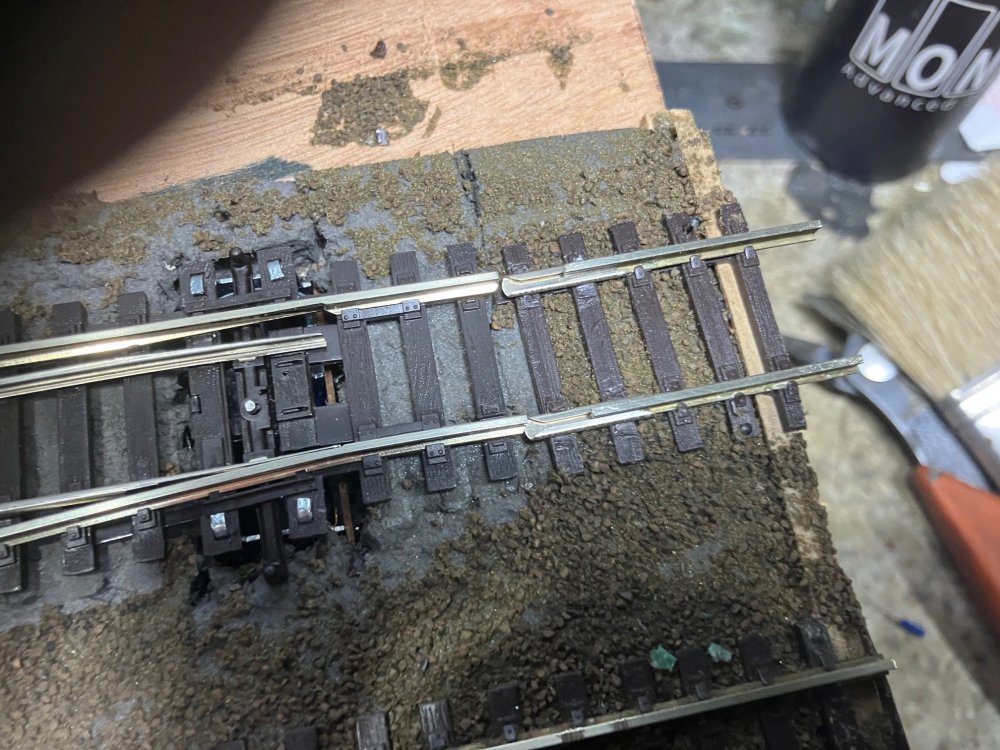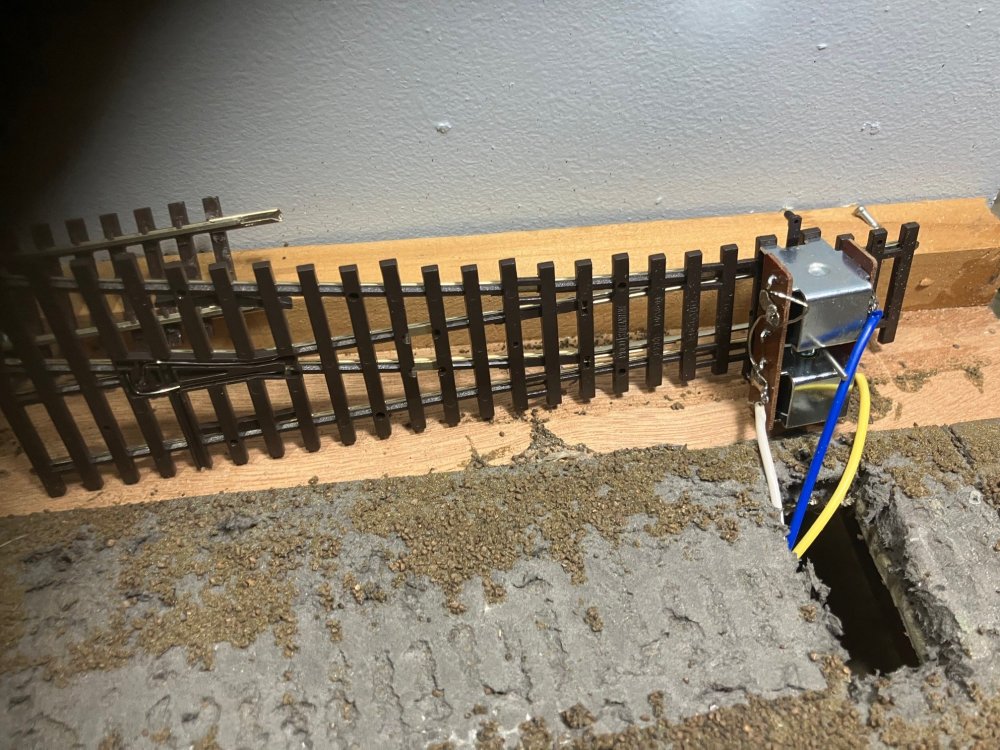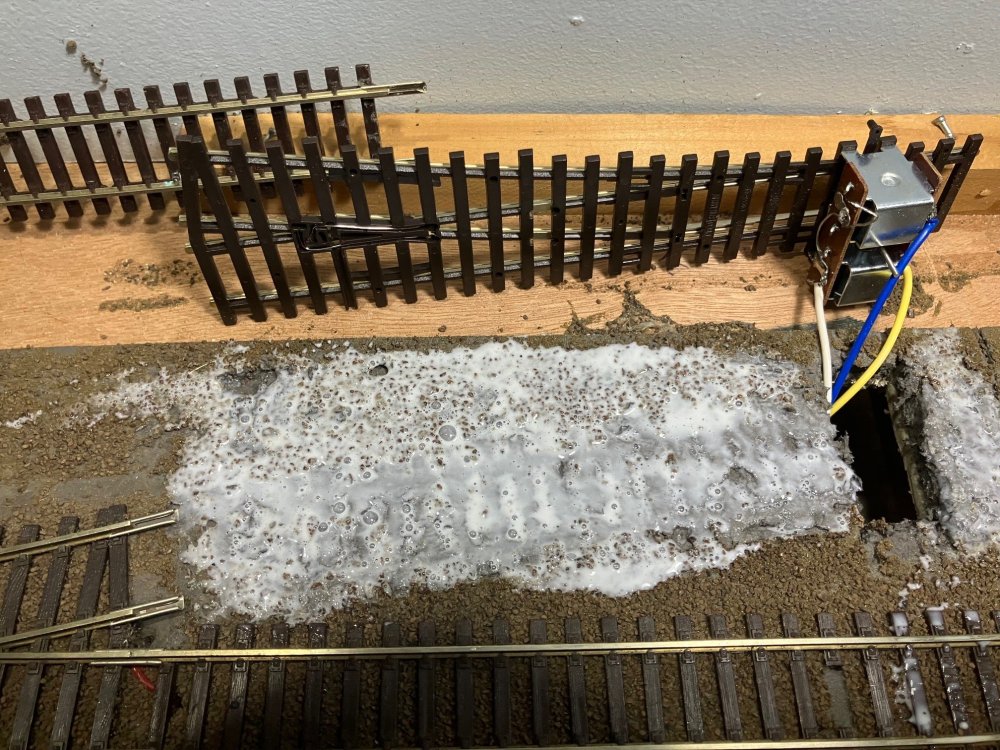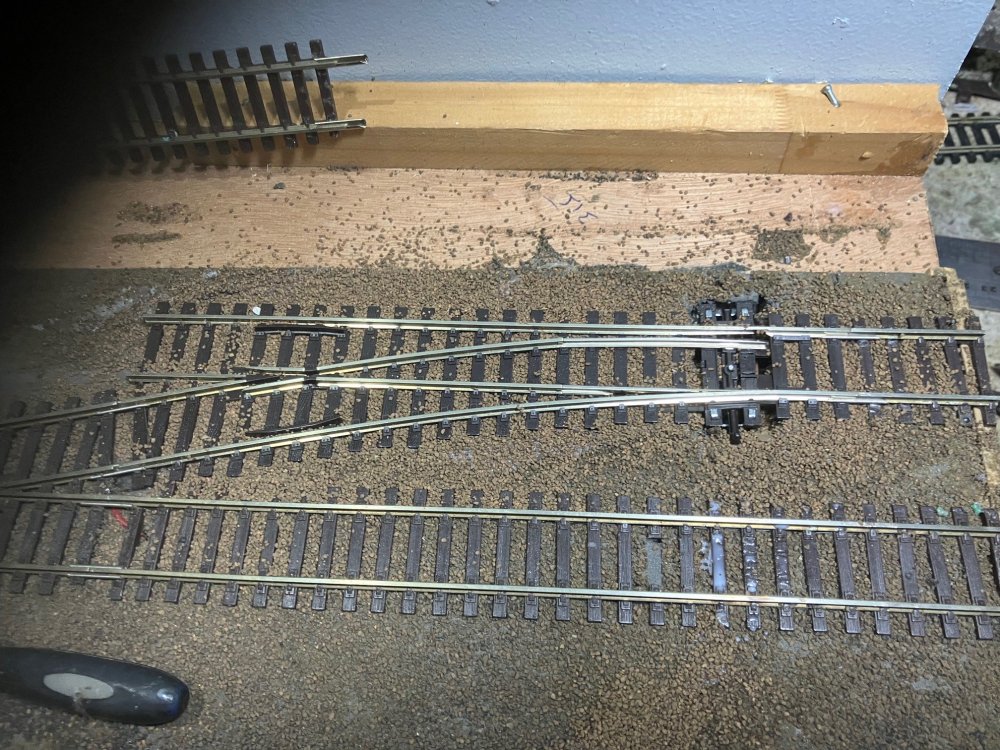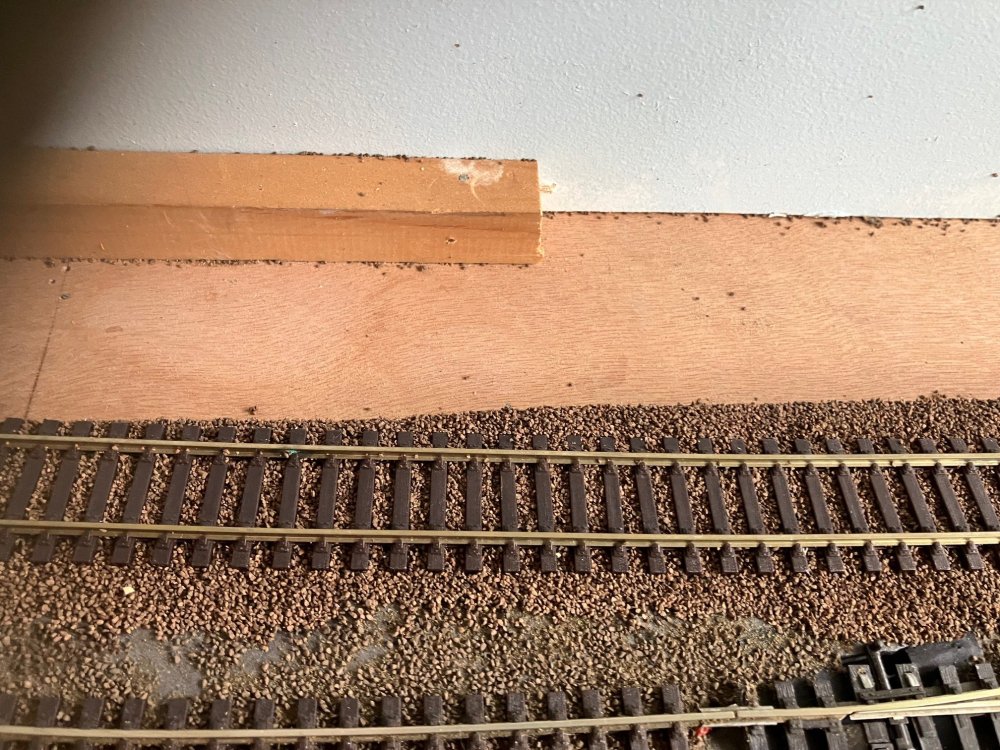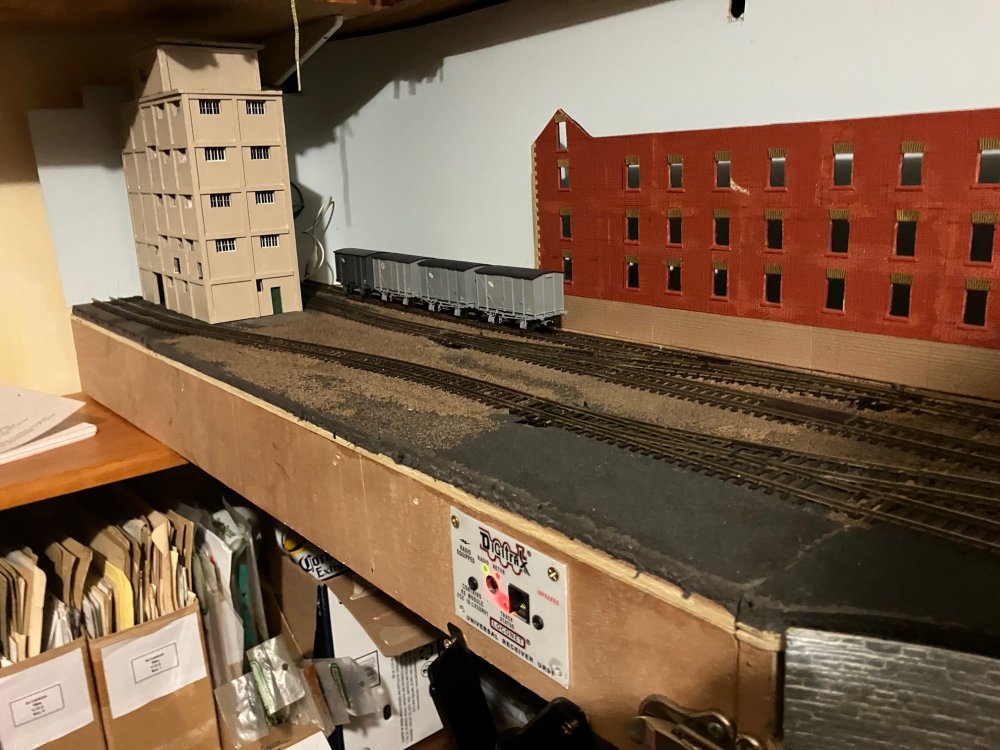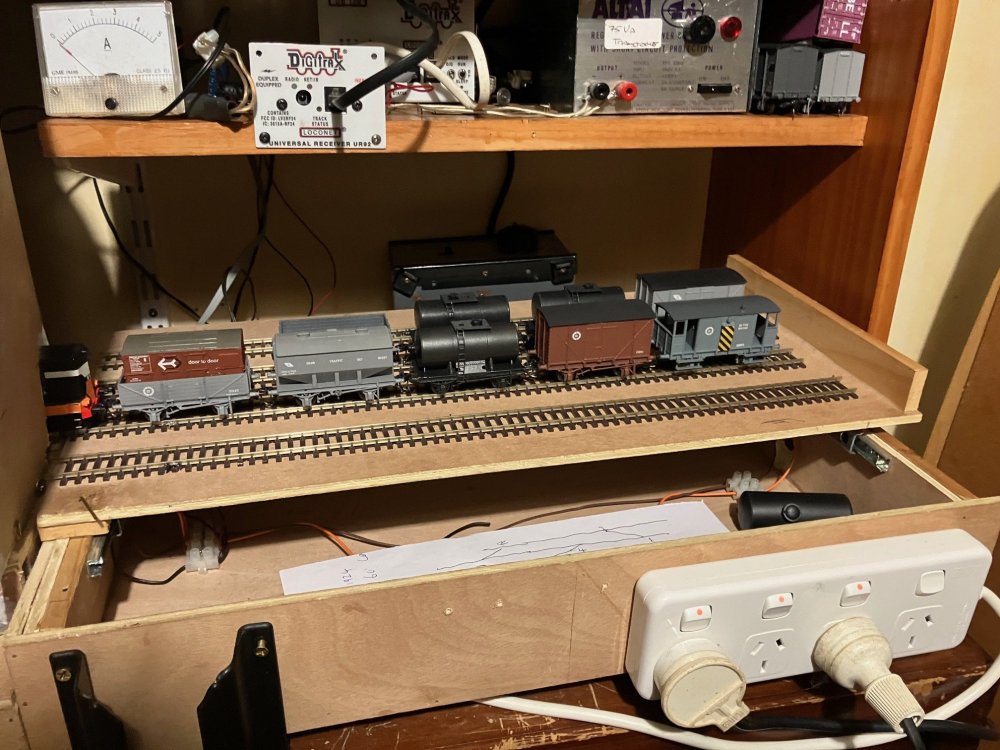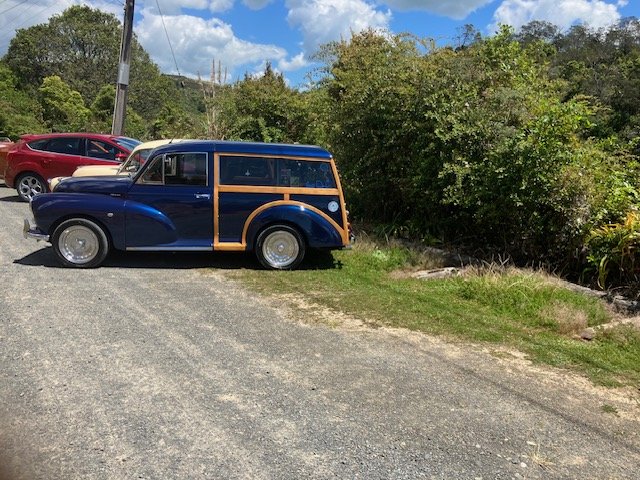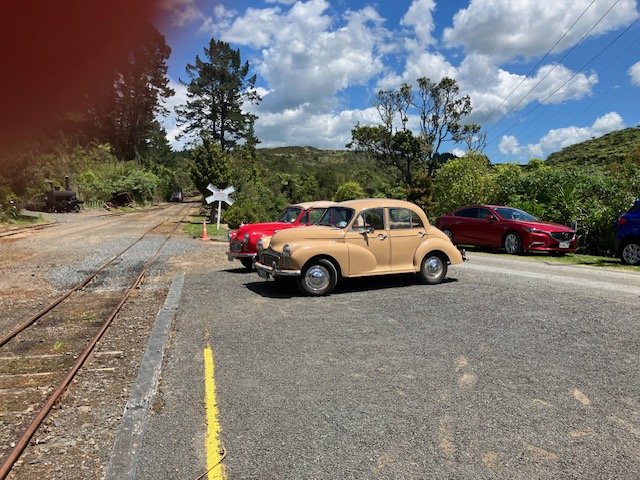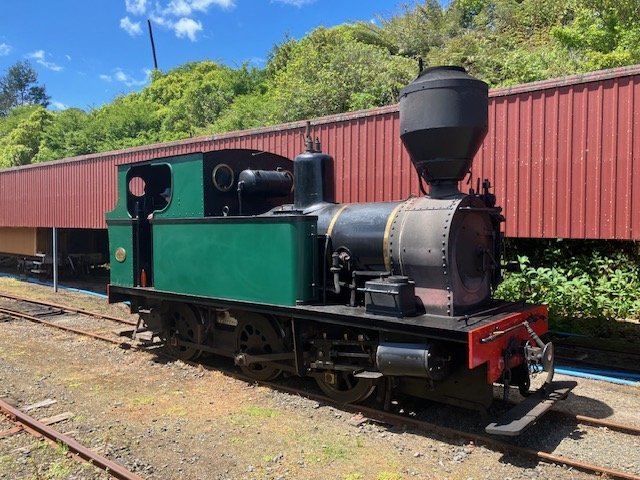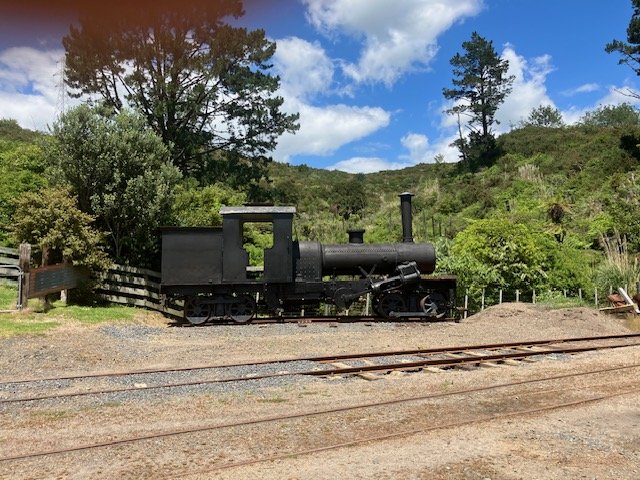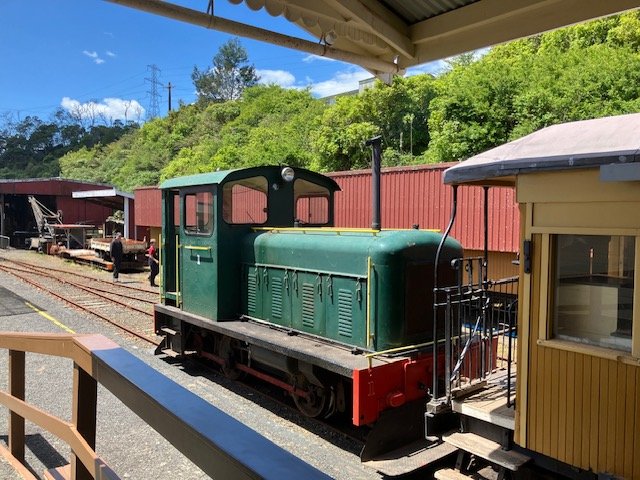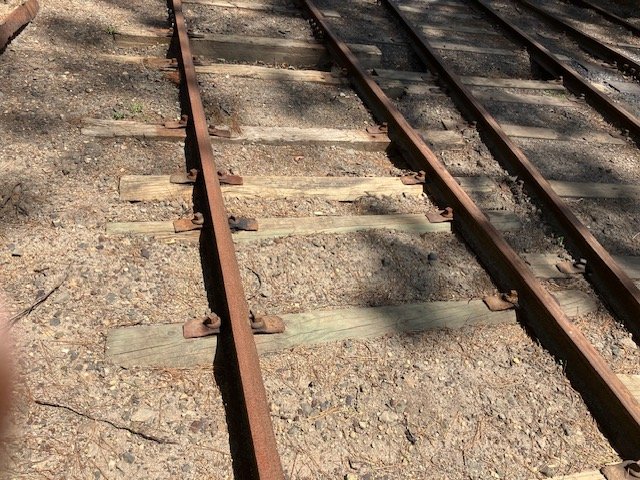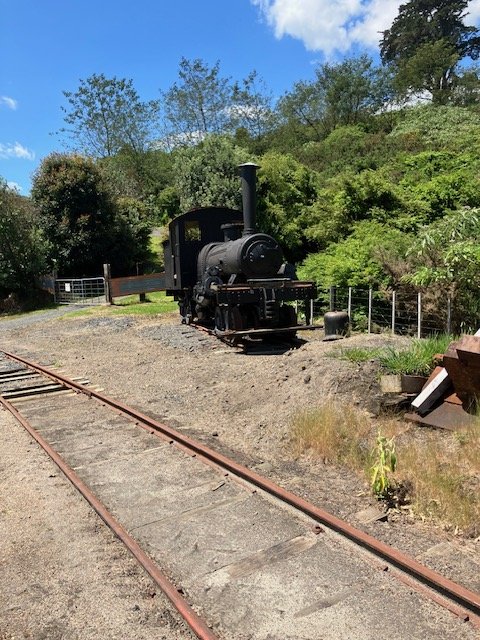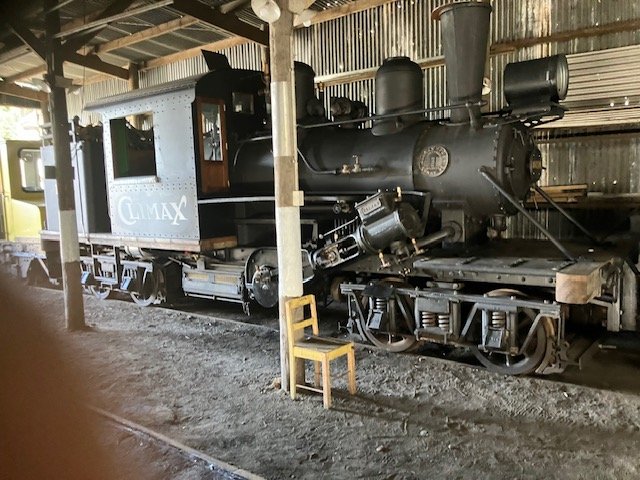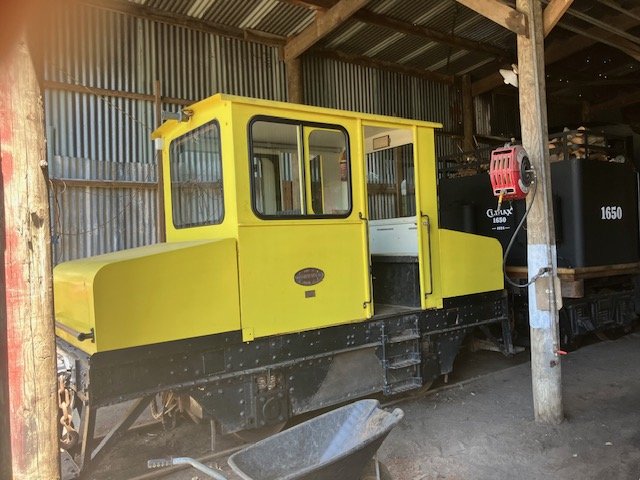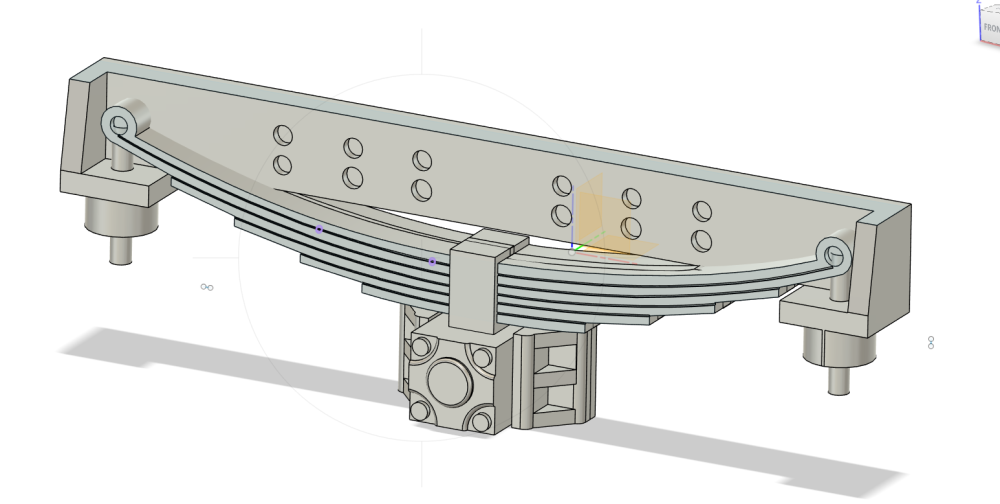-
Posts
4,844 -
Joined
-
Last visited
-
Days Won
119
Content Type
Profiles
Forums
Events
Gallery
Blogs
Store
Community Map
Everything posted by Mayner
-

Road goods vehicles in Ireland 1950s/1960s
Mayner replied to Mol_PMB's question in Questions & Answers
Large companies such as CIE, Roadstone tended to but AEC/Leyland trucks smaller operators and owner drivers tended to use 2 axle trucks Ford, Bedford, Dodge with Hino becoming a dominant marque during the late 60s. Growing up in the 60s some normal control models such as the Leyland Comet were still in use with engine/over forward control dominating, Models like the Bedford TK and tilt cab Ford, Dodge and BMC models appearing during the mid 60s. While CIE held a dominant position and larger companies had their own fleets, owner operators (hackers) running their own trucks (unbranded) were significant e.g. delivery from merchants to building sites & farms. CIE is likely to have used owner operators to deal with seasonal peaks such rail from farm to railhead during the beet campaign. Owner operator trucks tended to be 'unmarked" without ownership or fleet details, trucks delivering to building sites in the 70s & 80s sometimes could be quite decrepit. -
Comparison of Galway and Sligo line workings from the 1960 and 1980 WTTs indicate that the Sligo Night Mail was an out and back working from Sligo and the Sligo "Day Mail" in the 1960WTT was a through train to & from Dublin. The Dublin-Galway 'night mail" were the only scheduled mail working on Mullingar-Athlone section in the 1980s timetable, the "day mail" that operated between Dunlaoire Pier and Galway had been withdrawn in connection with DART works. Although the 'Day Mail" 1980 WTT. During the 1980s the consist of the early morning 08:00? Heuston-Galway and its mid afternoon 15:10? return included a TPO and a Luggage/Brake in its consist. During the 60s & 70s Day Mail connected with Sealink Mail Boat service to an from Holyhead running through to and from Dunlaoire Pier. The Day Mail was cancelled when the connection to the Pier was severed in connection with the DART during the late 70s and Galway Line passenger services reduced from 5 to 4 return trains daily. The note (Ltd) in the train describition on the WTT indicates that the train operates as a mail train with limited passenger accommodation often 1 coach. I travelled a couple of times between Connolly and Galway on the 8:40 during Aug 77-78, mainly carrying passengers off the overnight Holyhead boat usually hauled by a 001, of conventional stock with buffet car possibly 7-8 coaches unfortunately don't remember if a TPO or vans were attached. Night Mail may have included fitted wagons as tail traffic at least up to the 70s. I have a photo of an Up Night Mail arriving at Ballysadare in the early 60s consist made up of B149, 4w heating Van Black & Tan, ex-GSR side Corr coach Late 50s Green, Bogie TPO (possibly ex-GSR Green, approx 3-4 H vans. David Malone supplied photos of 4w Bullied Vans in consist of Night Mail during late 60s-early 70s, 4w Post Office van marshalled next to loco ( window side of PO Van facing North/East luggage bags on hooks) followed by Hooded vans with 4w heating van marshalled at rear of train, may not have retained passenger accomodation? The 1980 WTT indicates that the Night Mail may have lost its passenger accommodation, vaguely remember seeing 'a jackpot" with three trains crossing at Maynooth one evening during the early 80s. The down Sligo Liner was first to arrive and was propelled into the layby siding at the Leixlip end of the station, the Night Mail was next to arrive and routed into the passing loop, 141 Class, BR Van, TPO and a number of Luggage/Brakes. Up Sligo Pass arrived pair of 121 Class don't remember if coaches were Supertrain of conventional stock-----------its now a long long time ago! A Westport portion of the Night Mail may have operated into the 80s, I remember seeing a photo of a 141 + 1 Luggage Van with An Post Renault 5 Van waiting at Roscommon. Presumably An Post Staff had enough time while between Connolly & Athlone to sort Mayo Road mail. Down Trains 1960 1980 Galway Pas. M Galway Sligo Westport Pas Mail (Ltd) Dublin-Galway Mail M-F Westland Row 8:40 am 8:10 pm Connolly (Mail Centre) 21:45 Mullingar 9:55 am 10:03 am 9:30 pm 9:48 pm 22:57 23:07 Athlone 10:56 am 11:04 am 10:44 pm 10:56 pm Galway Pas M Mullingar-Sligo Mail T:S Westland Row 9:25 am Mullingar 10:40 am 10:46 am 11:25 pm 00:35 Sligo 1:30 pm 2:20 am 2:30 1960 1980 Up Trains Galway Pas. M Galway Sligo Westport Pas Mail (Ltd) Sligo-Mullingar Mail Galway 3:30 pm 8:15 pm 22:00 Athlone 4:59 pm 5:12 pm 9:51 pm 10:05 pm 23:10 23:20 Mullingar 6:07 pm 6:19 pm 10:56 pm 11:15 pm 00:18 00:33 Connolly (Mail Centre) 01:45 Westland Row 7:40 pm 12:40 am Sligo 2:25 pm 7:30 pm 19:45 Mullingar 5:13 pm 5:18 pm 10:55 pm 11:15 pm 22:25 Connolly Westland Row 6:38 pm 12:40 am
-
I was responsible for concrete paving on housing and commercial projects down the years! Concrete paving practice changed significantly down the years (a) originally concrete paving/hardstanding was laid in bays up to 6-8' square 6'' mixed and placed by hand. Concrete bays on roads/footpaths and large areas tended to be cast in alternate bays to counteract shrinkage. Rebates (gen 1'X1") were formed at joints in road paving and filled with bitumen to prevent water seeping through to the sub-base and damaging the road. (b) Bay width increased to a max of approx 12' from the 1920s onwards with longitudinal joints every 15-20', rebates again formed in joints in roads and filled with bitumen, typical Dublin Corporation road of the 20s-80s era. Roads had a tamped finish (improve traction/skid resistance), with a smooth (bullnosed) trowel finish at joint. In Ireland and the UK footpaths and paved areas where people were walking received a brush finish, joints barely noticeable in the smaller scales. The length of bay that could be physically be placed by a (4 man) gang in one day increased significantly 60'+ plus with the arrival of readymix concrete during the 1960s During the 90s we received a particular "brushed finish" spec for the floors in the Masonite Plant to overcome issues with wood dust and the adhesives used. (c) Significant change in practice occurred form the late 80s onwards with the widespread use of the power screed and the machine cutting of joints post placing. What does this mean to the modeller? Square/retangular bays up to 8' in bays placed up to the 1920s. Max 12' wide bays with longitudinal joints every 15-20' (bitumen filled joints in roads) concrete placed 20s-80s, barely noticeable joints concrete placed late 80s onwards. Relatively smooth non-slip finish in paved areas where people were walking/working, tamped finish on roadways. The main advantage over concrete over tarmac or stone/gravel paving is its duarbility & restistance to oils/chemicals and can be power washed Photos from Inchacore revealed some interesting points. 2'X2' paving slabs used on running shed apron during 80s/90s. Concrete paving with non-slip (oil/chemical resistant) floor paint finish inside Diesel No1 Mid 90s Deisel No2 /Ramps area tidied up with (fine) stone fill to rail level for Inchacore 150. Interestingly paving slabs apparrently in use of walking routes through Ramps area. Before the clean up! late 70s ballast/fines in in Ramps area filled rail level to allow access for maintence and repair work. Whenever visited the 'surface" in the Ramps area was very slippy with oil grease and water! It basically looks like anything goes in a loco yard from a concrete slab, to paving slabs or ballast brought up to rail level I seem to use 3-4mm mdf coated with fine dark grey scatter on the paved areas (roads and loading banks) of my 1950 ish rural Irish layout.
-
I have a 1952 photo of 666 "Himself" arring at Sligo with a train of 7 6w coaches and a 1957 Shuttleworth photo of 659 (belpair firebox) making up the Night Mail at Sligo complete with 6W Midland TPO. Apparrently the 650 Class appear to have worked the Sligo portion of the Night Mail in the 1950 until replaced by the A Class. Some proper MGW 6w coaches incl a TPO is still on my to-do list if I ever get round to it!
-
Hi Harry Nice to see progress building your 1950s passenger train & 650 Class. how did you form the Laminate roof it looks the part?
-

"Voiding the Warranty" - Mol's experiments in 21mm gauge
Mayner replied to Mol_PMB's topic in Irish Models
Ultrascale wheels are probably the best option if you are able to accept the long lead time (my last order fulfilled within 6mths), supplied to order complete with axle set for 21mm gauge, a decent crankpin system and no risk of tyres coming adrift from the wheel centre unlike AGW driving wheels, Sharman wheels next best alternative if you can source a set (possibly Brassmasters). Most of my older 25+year old 21mm gauge steam outline locos fitted with Sharman wheels, Gibson on more recent locos, I ran into a problem with driving wheels coming adrift from the centres during assembly and AGW steel crankpins ringing off. I now remove the tyres from the centre, de-grease,then re-assemble securing with Loctite, I use 14BA c/s bolt as crankpin, AGW crankpin bush and secure with brass 14BA nut, worked without a problem for 25 years! Most of my 21mm gauge diesels run on Ultrascale wheel sets with b-b set at 19.3. 19.3 B-B works with AGW OO/EM profile wheels, but 19.5 b-b with Sharman type B wheels which have a narrower tyre width than AGW or Ulrascale OO/EM profile wheels. I seem to have managed without a wheel quartering jig before buying a GW quartering jig about 20 or so years ago https://www.gw-models.com/product/wheel-press-quartering-jig/ been worthwhile having assembled several locos with press-fit wheels and hopefullyseveral more. -

"Voiding the Warranty" - Mol's experiments in 21mm gauge
Mayner replied to Mol_PMB's topic in Irish Models
Getting complicated GSR/CIE loco grey. Its likely Inchacore formulated its 'loco' grey to its own recipe in house during the 1920s as RAL (German) & BS (British) colour codes only began to emerge during the 1920s. Although I recently (about 5 years ago!) had the grey custom mixed from samples provided by JHB, I personally believe Howes Railmatch 412 "Weathered Black" provides a more realistic effect on a model. I several of my locos assembled about 30 years ago (how time flys) are painted in "weathered black" applied by airbrush, those finished in a satin varnish appear 'almost black" well cared for locos/spruced up for railtours, those finished in matt black varnish as grey careworn locos almost on their last legs. 650 Class. The kit was eventually produced in three versions to covering (a) late MGW-GSR-CIE with round topped boiler (b) GSR-CIE with Inchacore cab slotted valences with round topped boiler (c) GSR-CIE with Belpair Boiler. Although the initail version could be assembled in MGW-GSR or CIE condition, I introduced version (b) to similify assembly for modelers wanting to assemble the loco in late GSR-CIE condition by eliminating the tedious job of cutting out the half etched slots in the valences. Interestingly both versions sold reassonably well and in equal numbers! I produced the X Belpair boiler version of the class in response to a customer comission, interestingly the Belpair boiler locos did not sell as well as the round topped versions. While I completed a OO gauge MGW model of the loco for my self, 5 years on I still have to complete the assembly of a pair of 21mm gauge versions for myself both in GSR/CIE condition one Belpair one Roundtop firebox. I guess one question is whether you will be tempted to follow De Selby's (Alan Edgar) example and assemble your loco with working inside valve gear. https://www.rmweb.co.uk/topic/175977-jm-design-650-class/#comment-5018653 -
Definitely worth considering building the West Cork 4-4-0T with a functioning chassis. Several years ago Richard Ellis produced a Shapeways GNR(i) 2-4-2T with a 3 D printed chassis and pony trucks, I dont know if Markits have resumed production but Scalelink https://www.scalelink.co.uk/acatalog/Locomotive_Driving_Wheels_.html appear to produce a range of driving wheels which may be suitable and straightforward to use. Coupling rods could be fabricate using Alan Gibson "universal" coupling rod set or even laser cut in nickle silver or even steel, PPD in Scotland offer custom etching and laser cutting services https://ppdltd.com/laser-service.html. Axle and bearing holes best reamed out and fitted with top hat brushes 1/8" driving axle, 2mm bogie carrying wheels, High Level and Branchlines (Advertises in UK modelling magaxines) supply suitable motors and gearboxes. Parrallel reamers (1/8" and 2mm) for opening up brushes/bearing holes for axles and set of Tapered Broaches for opening up holes in 3d printed chassis, and etched gearbox parts for bearings and holes in coupling rods. In full size practice castings/bearings/motion parts require machining to function. It might be worth considering printing the loco using a Far Eastern 3D Printing Service such as https://facfox.com/service/sla-dlp-3d-printing-service/ (my preferred supplier) rather than a desktop or home printer. The majority of my wagons were printed in a SLA resin with ABS properties to overcome the problem with brittleness inherent with the majority of SLA resins compitable with desktop printers overcoming problems with printing fine detail parts like brake gear and buffer heads. Facfox also has the capability to print parts in aluminium, a NZR 9mm scale modeller (NZR 3'6' gauge on O gauge track) had loco mechanisms (gearboxes, gears, chassis) printed in aluminium for diesel locos. Lower production/ printing ting costs largely off set the cost of shipping an item (by courier) from China. The shipping of a small order such as the parts for a loco or several wagons about €25. Customer service excellent (support staff understand my English!) we had some initial problems with parts damaged in transit, only recommendation would be to ask for individual parts to be wrapped individually in bubblewrap.
-
Interesting I once saw an O Gauge model of a large NZR diesel electric loco with the superstructure printed in 2 sections and glued together. The designer used a 3D print bureau to produce the FDM prints. What design software, print processes do you use.?
-
I don't know if they are interchangeble but both the DG and B&B couplings (Derek Bunting) appear to be based on the Rivorossi (hook and loop) coupling the B&B using an etched loop rather than the user having to form the loop from wire. I successfully used B&B couplings under exhibition conditions on a EM gauge layout over 20 years ago, seldom experiencing problems coupling up or magnetic uncoupling, my wagon stock had loops at both ends locos with hooks only, while a friend who used a mixture of B&B, Rivorossi , and Bemo couplings fitted a loop at only one end. The friend's father (an Irish Railway Clearing House employee) used Rivorossi couplers on his OO gauge GWR layout during the 50s and 60s, his son continuing to model the GWR this time in EM. Whether B&B couplings are available in S or 7mm is another question.
-
Finally found the motivation to replace the loco release turnout with a crossover and extend the run round loop into a siding to serve a dry goods store, also used the opportunity to tidy up the 'long siding" which had been on a temporary alignment since I added the mill in 2023! Beforehand! New turnout/crossover positioned for marking cuts in existing run-round loop, 'long siding" lifted. Total stock of straight/flexible OO track 1 section of Peco Streamline, 1 section of Hornby. Section of loop removed slot formed in baseboard for peco point motor. I cut the rails with a fine tooted Razor saw. Formed the slot by first removing the foam underlay and chain drilling theough the ply baseboard top (10mm) and tidying up with a chisel. Trackwork is laid on pva (office or school glue) lightly pinned in place and Woodland Scenic ballast scattered on top. Trial fitting turnout before finally fitting rail joiners. Rails slid back and molded chairs/railfixings removed on two sleepers. Track was originally laid in pva bed across baseboard joint before cutting rails when I originally laid the track in 2021-2?. Hardwood strip used to protect underlay and track along baseboard edge. Pre-wired point motor (not reachable after installation!) I had removed most of the excess ballast in this area. PVA bed. I first came across this method being used on a large EM gauge UK club layout using a combination of flexible and hand laid track and pointwork during the 1990s Point installed fishplated in place, loose ballast tamped in beds (areas beteeen sleepers) with an artish mop brush. (excess glue on top of sleepers removed when dry.) Drystore Road following removal of excess ballast 24hrs later section re-connected to layout and cut of vans on Dry Store Road. At this stage I am considering a post 1900 corrugated and concrete drygood store similar to thosee at Ranks Clara as backround buildings, and moving the brick maltings building towards the centre of the layout and the Tower Building (both inspired by Grand Canal Dock) The other major change planned is to add a loco release/storage module to the staging, so that a 5 wagon train can arrive in the staging.
-
The loco appears to be similar to that used in a cheap G gauge train set widely available (Australasia & United States) about 18-20 years ago. The set was popular with large scale modellers loco had basic but effective radio control, and locos/stock good basis for kit bashing into something less toy like. Main differrence between Australiaian and US versions was the placement of the batteries, cab of local version and tender in United States.
-
Two recently restored GSRPS coaches including a Buffet Car ran in the excursion to Youghal, possiby the only time GSRPS stock were used in passenger service. At the time I was an (armchair) GSRPS member had hoped to travel but unaable possibly work. Later David Parks told me that the paintwork on the recently restored coaches was damaged by overhanging vegitation on the branch, the coaches entered service without a final coat of varnish/lacquer and CIE had ceased trimming back overhanging vegitation on the branch.
-

Bush Tramway Club Waikato one of my 'happy places!
Mayner replied to Mayner's topic in Photos & Videos of the Prototype
Although I have visited in July, I managed to make time to have a decent look-around on todays operating day just over two years since my original post. A local Morris owners group had shown up for a Sunday afternoon scenic tour of the district, I ended up behind a Morris later in the afternoon doing very well on one of our steep and winding country roads (2lr light SUV vs 1950s 1lr light saloon w rear wheel drive! Although the Pukemiro Pecket was in steam in its usual place today was a ' Diesel Day" seemed a quiet day with relatively few visitor around possibly the good weather. The Pecket was originally owned by the Pukemiro Coal Company used to haul trains to and from the mine and the Junction and only capable of hauling one coach on the steeply graded ex NZR (New Zealand Railways) branch line. The "Price E Class" was a New Zealand design of geared locomotive for Bush (Logging) Lines basically a cross between a Climax Locomotive with its angled cylinders and a Heisler with coupling rod drive to the driving wheels. Both types operated in NZ before Price develoiped the E Class! Loco is cosmetically restored! Train was made up of 2 coaches topped and tailed by a pair of Drewry 0-4-0 locos (similar in outline and desighn to a scaled down Drewry 04!) The pair originally operated at a local coal fired power station. A curiosity recently (ish) installed 1/2 round sleepers on a siding, rectangular sleepers on main line and loop. Recently restored Climax 1650 in the loco shed, yellow loco is a Battery Electric once used at a Hamilton dairy plant, restored with a cab extended to carry passengers. On busy Operating Days various 'jiggers" and or the Battery Loco are sometimes used to provide rides up and down the yard. -
The free versions of Fusion 360 or Onshape https://www.ptc.com/en/products/onshape both relatively simple to use and excellent for designing 3D printed models. Free Version of 360 users are limited to 10 editabe documents, designs produced on Onshape free plan are treated as open source freely available on line. Most of the JM Design wagons were originally designed by a freelance 3D modeller using the Onshape (commerical license) about 4-5 years ago, I successfully revised/updated several of the models using Fusion 360 during the past 3 years. Its feasible to design finely detailed models using 3D modelling software, the real challenge in the smaller scale is in selecting a printer/print technology capable of reproducing fine detail and surface finish. It was necessary to outsource the printing of the JM Design wagons to commerical 3D print shops with full sized printing machines capable of printing in an engineering resin as available desktop printers & resins could not achieve acceptable results. I successfully printed the axleguard.spring assembly in the rendering using a desktop printer and a Tensile Resin produced by Monocure an Australian supplier of 3D printing resins. Ironically FDM may be a better option to resin for printing models in 7mm scale and larger; Woko a regular RM Web contributor appears to produce really fine models of 7mm locos and stock using FDM technology https://www.rmweb.co.uk/forums/topic/172854-wokos-bench/
-
I changed to N scale many years ago out of frustration trying to build a OO gauge layout in the box room of my parents house and after a few false starts probabably built what was my most satisfying layout, which lasted several years until a house move. One of the main lessons was not to scrimp on price and only buy locos with high quality mechanisms (at the time mainly of German manufacture (Minitrix & Arnold) ), at the time other manufacturers budget priced locos (Bachmann, Lima, Life Like (Mehano) were best described as disposible ran ok for a week or so. I originally intended to run locos and stock un-modified out of the box, but gradually started painting locos and stock in CIE colours and eventually modified locos to resemble CIE diesels even scratchbuilding loco bodies. I found that the general standard of models had improved significantly when I began modelling American outline N gauge during the late 80s with the advent of high quality (but durable) Japanese manufactured locos and the availability of Kadee N scale magnetic uncouplers. Its possible that similar developments may take place in T Gauge over the next 10 years or so, interestingly the current T Gauge coupler appears similar to the almost universal Rapido coupler once commonly used in N scale. Another alternative would be to consider T Gauge as a practical option for modelling a contemporary main line layout with long trains running at main line speed in a restricted space. The Model Railway Club (London) pioneered the modelling of a railway in a landscape in N scale with it Chiltern Green layout during the late 70s, included a station and viaduct on the 4 track Midland Main Line in N gauge and a fine scale branch line passing through the scene at a lower level. In an Irish context a realistic model of the 4 tracked section of the Cork Line (Hazlehatch one of my favourite places) or the Belfast line at Gormanstown would be achievable in a medium sized room or garage.
-
Acetylene gas appears to have been widely used form of carriage lighting on minor railways in Ulster from the late Victorian era onwards. Both the Clogher Valley and Cavan and Leitrim converted to acetylene lighting at an early stage, and possibly the Donegal & Swilly (similar roof mounted lamps and boxes possibly for housing acetylene generators on carriage ends in photos of CDJR & LLSR carriage stock). My old man used an Acetylene Generator (similar to the Rexarc 50PS https://rexarc.com/products/model-50ps/) as part of his set up for fabricating tubular steel furniture in the back garden our house in Dublin during the 1960s. Dad carried out the welding in a paved area of the garden out of sight of the neighbours so no complaints.
-
CK Prints are planning to produce an ammended OO gauge version of the JM Design GSR Grain wagon under license. I expect Enda will release information on the release of the wagon when he is ready.
-
Generally a service of 3-4 passenger/mixed trains operated daily on short feeder branch lines (like Loughrea, Birr) on the GSR system up to the fuel restrictions of the Emergency, CIE attempted to restore a similar service frequency following the end of the Emergency until hit by the Fuel Crisis of 1947 following which remaining branch line services were cut back to two trains daily, usually one scheduled as passenger one as mixed. Main line passenger services tended to be similarily infrequent even into the midlate 60s. There were a number of exceptions to the two mixed/passenger rule. In the 1960 timetable the 'morning' Farranfore Valencia train was scheduled as a "Goods" between Tralee and Killorglin, then working as a "Mixed" to Valencia, returning in the evening as a "Perishable" to Farranfore and Tralee. In practice a single 6w coach appears to have been coupled to the loco of the Goods between Tralee & Killorglin. In diesel days morning train from Valencia and its opposite afternoon working were classed as passenger both working to and from Tralee. Traditionally the morning train form a country or provincial terminal and its opposite evening workings were classed as the most important workings.
-
All orders were shipped last week, several packages have already arrived in the UK Bulleid 4w Van assembly. Georgeconna published a thread on asseembling a Tin Van on Pages 3-5 of his Workbench Thread during Jan & Feb 2014 (hard to believe I first released thes kits over 10 years ago) David Malone assembled both a Heating and Luggage (Tin Vans) and a Luggage Van (Hooded Van) to P4 standards on 21mm gauge both with detailed interiors with the body and chassis as separate sub assemblies. "Heating Van Update" New Irish Lines Vol 7 No4 Nov 2015 Outlines assembling van with body separate from chassis. screw fixing or water and fueltanks from inside, heating boiler cut from hypodermic syringes and plasticard detaiing. Photo from back cover May 2016 New Irish Lines. David provided several photos of 4w Bulleid Vans in the late 60 which I used in designing the original 2013 kits and 2021 variations. MGW Vans and coach side overlays. I covered the assembly of the MGW Vans & the use of coach side overlays from page 2 of my Tales from the Carriage Shops thread onwards onwards
-
Your CVR coach and van appear nicely modelled. I assembled a pair of Branchlines (Andrew Mullins) CVR 3rd Class Coaches and a CVR Horse Box about 30 years ago but never got around to building a matching Van (passenger brake) or loco to complet the train, must do while I am still able.
-
My one and only journey over the Larne line was on a IRRS outing to Larne during the early 80s out via the Enterprise to Belfast Central, bus transfer to York Road 2 car special to Larne and Antrim worked by River Maine and driving trailer car, out non-stop to Larne, visit to Whitehead and lunch in hotel with train crew!. Reversed at Bleach Green Junction (points apparrently operated by hand) and stopped at every level crossing to Antrim where we transferred to a Derry-Belfast service changing to the up evening Enterprise at Lisburn. Apart from Whitehead one of the highlights was gricing outs of service stock including some MPD cars from the Motorway ramp at York Rd. Too late to see a working MED or MPD but Whiterock certainly brings back memories of a 'Great day out" of over 40 years ago.
-

Narrow Gauge in the Rockies not quite
Mayner replied to Mayner's topic in US / Canadian Railway Modelling
Little activity on the garden railway during Sept and Nov mainly as a result of unpredicatble (high winds & heavy rain) weather on most weekends. Although forecast was not great Sunday was dry and I needed to move the Large Scale stock out of the garage/workshop to get some work done. A bit like the prototype I tend to run a series of trains out from one terminus (earlyish) in the morning to return to their starting point by supper time! All all tracks occupied in the yard at Jackson City, with almost all locos and every piece of freight stock. K27 #464 had earlier worked a mixed freight to Jackson City droping its train of Box & Tank cars & Caboose on the Freight House (goods shed) spur before returning light to pick up a train of flats and gondolas. Another K27 463 waits on the far side of the water tower with a mixed freight, while a C16 2-8-0 masquerading as C19 349 waits to work a stock train to Arboles a small wayside depot qand stock loading point. #464 passes the storck train at Arboles (should change to Arboles as one of several dwarf conifers planted no longer appears to be a dwarf species) In its final years the Colorado narrow gauge mainly hung on (ealy-mid 60) by transporting steel pipes used in the construction of pipelines from local oil fields. To handle this traffic the DRGW used a mixture of converted gondolas (open cars) and Idler Cars (flats) often cut down from old box cars. Someday hopefully (finances comitting) the Jackson County will pick up some "Pipe Gondolas" (Gons with ends removed and handbrake wheels re-located) I am not going to butcher my existing Gondolas into Pipe cars! With the Pipe and Stock trains out of the way "Works Goose" RGS #6 got out for a run. Interestingly although bodged together from used automobile parts almost 90 years ago the entire RGS Goose fleet of 7 "Motors" survives mainly in operating condition in Museums & Tourist railroads in the West. Managed to turn #348 between photos and place her train on a spur line ready for departure. One of the drawbacks with knuckle couplers on the loco pilots are derailments with the loco pushing stock through No4 (medium radius (Peco speak) turnouts. So I basically avoid pushing stock through No4 points used in a number of place on the railroad. Had planned to use our oldest loco a battery RC conversion of a Bachmann "Connie" 2-8-0 purchased almost 18 years ago to help work our trains home to our garage staging at the end of the day, but like the Drumm battery trains and todays EVs her batteries seem to have reached the end of their life after 4-5 years, charged up ok but only managed one lap of the circuit! -
Midland Irish Peat (Klasmann and Deilmann) had a (possibly 2) 60cm (2') Gauge systems near Rathowen which used Continental (persumably German equipment) BNM had at least two 2' possibly 60cm systems which seems to have mainly used UK supplied equipment (Ruston & Hornsby locos & Hudson wagons) The BNM Kilberry (Co Kildare) Moss Peat works was originally served by a 2' gauge gauge system, converted to 3' gauge during the 1980s, BNM Glenties system (used to transport sod peat from bog to a sales yard near Glenties) may have remained 2' gauge until closure. Apart from Guiness and peat systems 60cm 2' gauge was also used on several industrial/forestryand quarry lines incl. a short lived line in the mid 20s linking a Barytes min on Ben Bulbin with Mullaghmore worked by a Simplex petrol loco, steam worked Glenfarne forestry line, steam worked quarry line on Achill Island, possibly reservior and hydo electric projects and Another case of the old Irish modelling dilemma neither HOe (2'6" gauge) or OO9 (2'3" gauge) are correct for modelling 60cm or 2' gauge railways. I guess HOf with Busch Feldbahn equipment offers an alternative to HOe or OO9 for modelling the Irish 2' gauge tempting!
.png.c363cdf5c3fb7955cd92a55eb6dbbae0.png)



